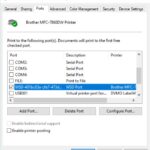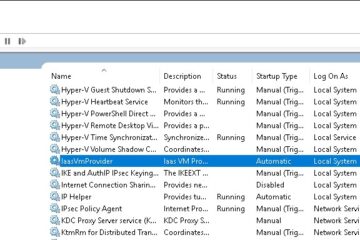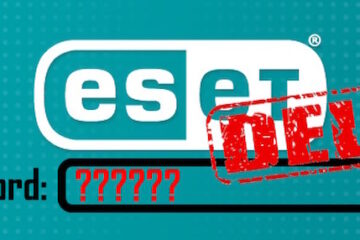Well, that phrasing is just wrong. In fact TCP (Transmission Control Protocol) is replaced by WSD (Web Services For Devices) but IP is used in either case AND WSD is not a PORT it is a control mechanism. Sooo, it would be more accurate to ask WHAT IS THE DIFFERENCE BETWEEN TCP/IP PRINTER PORT MONITOR AND WSD/IP PRINTER PORT MONITOR?
 From my end I was interested in determining which should be used in a corporate setting. The simple answer, for most companies, is TCP. WSD is a protocol that is designed for automatic discovery, setup and control. WSD makes devices Plug and Play through a network rather than requiring a USB cable. At home these are great features but these are not good things inside a company. In a company you want to install the printers you are interested in and not every printer on the network. Fortunately WSD stops automatically installing if it sees that 30 devices are already installed.
From my end I was interested in determining which should be used in a corporate setting. The simple answer, for most companies, is TCP. WSD is a protocol that is designed for automatic discovery, setup and control. WSD makes devices Plug and Play through a network rather than requiring a USB cable. At home these are great features but these are not good things inside a company. In a company you want to install the printers you are interested in and not every printer on the network. Fortunately WSD stops automatically installing if it sees that 30 devices are already installed.
Below is an excellent explanation from “LarryC” on an HP forum:
So how do these services make WSDMon different from TCPMon?
- Setup and Discovery – TCPMon is setup by a user (or software run by the user) that knows the IP address of the printer. If that address ever changes then it loses the printer. WSDMon can automatically install the printer when it is connected because it announces itself via WS-Discovery. It also checks the address of the printer with each print job so it is connected even if the address changes.
- Status Updates – TCPMon periodically (like every 10 minutes) polls the device status using SNMP to get updated status. WSDMon subscribes for printer events so that it gets updates immediately. It can tell you if there is a jam, no paper, out of ink/toner, etc. when it happens.
- Print Jobs – TCPMon prints via port 9100 and simply sends the data. There is very little, if any, feedback about whether the printer is ready to receive the data or who it is coming from. You don’t have information that you could use to cancel the job, etc. WSDMon sends a request to create a job and gets back an identifier to use to monitor and control the job. It then sends the data when the printer is ready for it.
Windows 8 enables WSDMon automatically. This means that you get a new printer on your computer when you connect it to the network – no other setup is necessary. That would not be very good in an enterprise situation because there may be hundreds of printers close enough to fill your printers folder. If there are more than 30 (a somewhat arbitrary number) printers then the process shuts itself off and you need to add the printer by IP address again. Whichever way it gets setup, you still get the rediscovery, eventing and print job control that TCPMon lacks.
.WSDMon will only work with printers that support the WSD services. This should be everything released in the last 5 years or so.
Of note, is that WDS is not limited to printers. Microsoft partner support provided this explanation to me:
WSD is a port monitor. A port monitor looks at the information coming in from the TCP/IP port and makes changes or routing depending on what comes into the port. Projected uses of WSD include:
• Printers and other shared network devices can be easily discovered, and when selected are automatically configured for the client computer.
• Automatic discovery of and connection to wireless devices, including cell phones, new overhead projectors, and home entertainment centers.
• Cameras that transfer pictures across the Internet to a user’s home computer, to their MSN Spaces site, or even to other devices.
• Home control systems that automatically discover and configure new lighting, heating, and other systems. These systems could be monitored and controlled from a computer located in the home or over the Internet.
Microsoft has a pretty good blog about it HERE if you want even more detail.



21 Comments